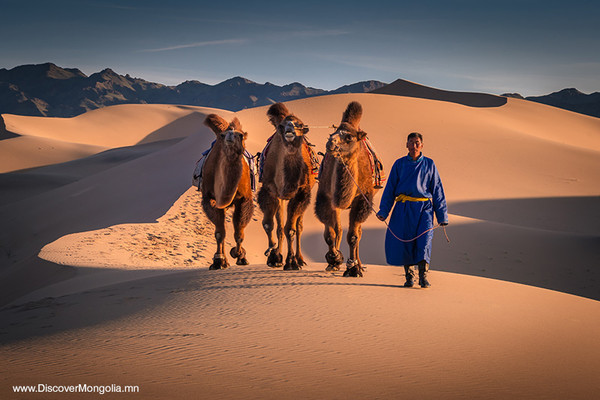States Minister Bat-Erdene of Mongolia at an interview with The Korea Post
By Publisher Lee Kyung-sik with Editors Keven Lee, Joy Cho
Minister Bat-Erdene Gat-Ulzii of Environment & Tourism Promotion of the Mongolia said, “Mongolia has rich tourist attractions and we are trying to share this information with the Korean people.” Speaking at an exclusive interview at the Embassy of Mongolia in Seoul with The Korea Post media on May 6, 2022, publisher of 3 English and 2 Korean-language news publications since 1985, Minister Bat-Erdene said, “We wish to promote the people-to-people relations and friendship between my people and the Korean people.”
Here are excerpts from the details of conversation shared between Minister Bat-Erdene and The Korea Post Media reportorial team composed of Publisher-Chairman Lee Kyung-sik, Vice-Chairperson Joy Cho, Managing Editor Kevin Lee, Feature Editor Woo Chang-kyu, and Reporter-Photographer Lee Ji-hyun.

Question: Please introduce the exchanges and inter-action between the two countries.
Answer: On Sept. 10, 2021, Mongolia and Korea held a high-level online summit. During the meeting between Mongolian President Khurelsukh Ukhnaa and his counterpart, President Moon Jae-in, South Korea became the sixth strategic partner of Mongolia.
In particular, Prime Minister Luvsannamsrain Oyun-Erdene of Mongolia takes special interest in the promotion of tourism between the two countries.
The tourist industry greatly contributes to the promotion and development of other industries, especially the economic and industrial areas.
From June 2022, the government of Mongolia will allow Koreans to travel to Mongolia without a visa for a duration of three months.
Mongolia is also making efforts to provide comfortable on-flight accommodation and simplify application procedures for entry visas.
Because there are no seats and the seats are expensive, the government is trying to solve it.

Q: Please introduce yourself as the tourist minister of Mongolia.
A: I am the Minister of Nature, Environment and Tourism. I will explain what you are saying in Korean again.
Q: Please introduce the government measures of Mongolia to promote tourist exchanges with Korea.
A: The government of Mongolia is working on measures to insure Korea and 11 other countries to be able to enter Mongolia without an entry visa.
In Mongolia, there is an airline Miyat in Mongolia.
The government of Mongolia has named 2023 a ‘Year of No-Visa Entry’ into Mongolia.
Q: What are the major tourist attractions of Mongolia?
A: When tourists come to Mongolia, they learn that they can have their fill of all the natural wonders of Mongolia, including beautiful lakes, rivers and various other natural features. (See major tourist destinations of Mongolia after the interview article.)
Q: Please introduce the visa-free agreement between the two countries.
A: As Mongolia has a visa-free arrangement for the Korean tourists, it is hoped that many Koreans will come to Mongolia.
It is also hoped that the many things agreed upon between the leaders of the two countries would be implemented smoothly.
Major tourist attractions of Mongolia:
Tsagaan suwarga--White Stupa:
Tsagaan Suwarga literally means White Stupa and the towering structure revealing limestone bedrock dating back to the ancient times makes for a truly awe-inspiring sight here. Don’t miss the splendid views of the desert floor down below which transforms from white to yellow to pink before turning red.
This spectacular spot is located 430 kilometers far from the capital city. A car is only available transportation to get there.
The best time to visit is May, September and October.

Khorgo Terkhiin Tsagaan Nuur National Park--Volcanic Formation:
Within this park, watched over by extinct volcanoes, the Lake Terhiin Tsagaan can be found at an altitude of 2060 m. The unique geology of the Khorgo Volcano to the east makes this a location that remains in your memory forever. The lake has a volcanic island at its center where exotic birds flock. The park is located more than 5 hours drive from Ulaanbaatar city.
Ulaanbaatar city--Capital of Mongolia:
The capital city shows you how ancient culture can be fused with modern day trends with ease. The ruins of monasteries rub shoulders with glass encased skyscrapers here while the covered Narantul Market gives you a single point from where to pick up traditional essentials for your life.
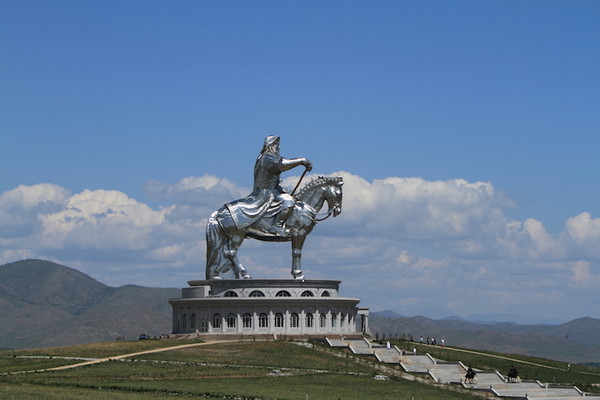
The city promises different experience in every season. Just bear in mind that Ulaanbaatar city named as the coldest capital city in the world with an average daily temperature of -20C in winter.
Khustai National Park--Asian wild horse:
Named for the birch trees that grow in the vicinity, this is the perfect place to get a glimpse of the steppes ecosystem. The fauna of the area includes the red deer, white-tailed gazelles, and Roe deer among others. There are quite a few historical monuments here such as the Ongot’s man monuments, temple ruins, and Hunnu’s rectangular tombs.
The park is located at an easy 2-hour drive from Ulaanbaatar to the west.
The Khustai National Park is an all year round destination.
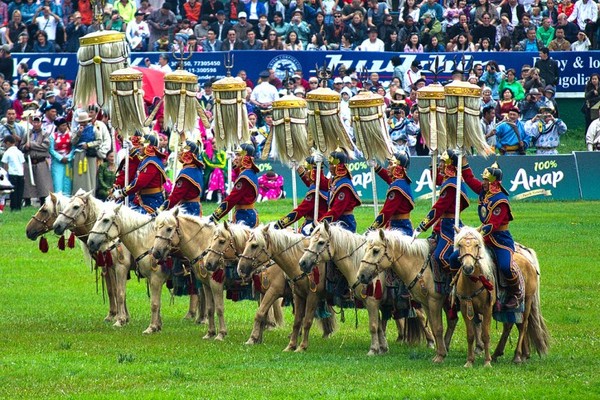
Orkhon Valley--UNESCO World Heritage site:
This is a UNESCO World Heritage site where you can find writings from the 8th century. The ancient capital city of Uighur thrived here and this is also where you can find the Tuvkhun monastery. If nature is more your thing then the Eighth Lakes (Naiman Nuur) and Orkhon waterfall should make a spellbinding spectacle for you.
The valley is located 500 kilometers away from the capital city and you can go by car on paved roads. The best time to visit is summer, early spring and autumn.

Kharkhorin-Erdenezuu--Capital of the Mongolian Empire
Believed to the oldest surviving Buddhist monastery in Mongolia, this is adjacent to Kharkhorin, the ancient city. Stones from the ruined old city were used to build the monastery.
The only way to get there is traveling by car. It takes around 7-8 hours from Ulaanbaatar city. The best time to visit summer, early spring and autumn.
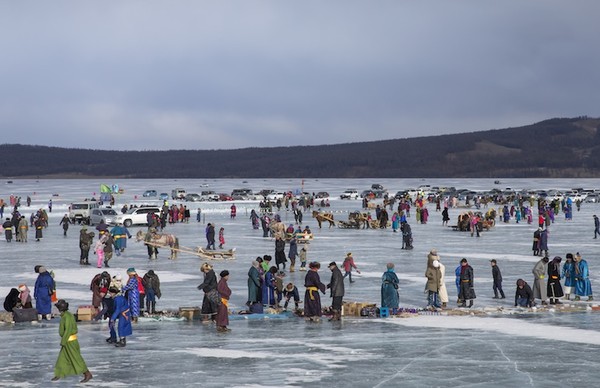
Altai 5 bogd--The Petroglyph Complexes of the Altai:
The five sacred peaks of the Altai Tavan Bogd are the highest ones in Mongolia. In the shadow of the Tavan Bogd is a glacier spanning 23 square kilometers, several lakes and a stunning waterfall. This location is also home to many archeological sites, collective forming the UNESCO World Heritage site, the Petroglyph Complexes of the Altai.
As it is located in the westernmost province of the country, we suggest you fly to the capital of Bayan-Ulgii province which takes about 3 hours. Afterward, you should hire a car to get closer to the Altai Tavan Bogd. If you want to climb to one of the five peaks, you can find a local guide and go on horseback.
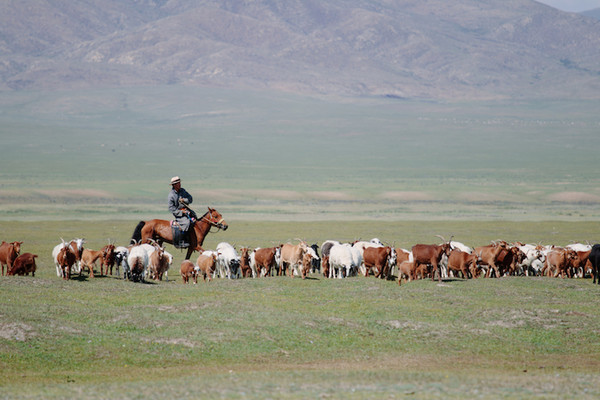
Terelj National Park --Magnificent alpine scenery:
Terelj National Park is truly scenic with lovely mountains, spectacular rock formations, beautiful meadows, and a river. Also, it offers a variety of activities such as horse riding, hiking, a Buddhist monastery on a hill, traditional ger stay and visiting the home of nomadic people.
It takes only an hour from Ulaanbaatar city by car /55km/. On the way, you can visit the giant steel statue of Chinggis Khan on horseback located in the middle of steppe which is also a truly impressive statue with a museum and panoramic view board on the top.
The Terelj National Park is the most fantastic all year round destination. We highly recommend you to try dog sledding in winter.
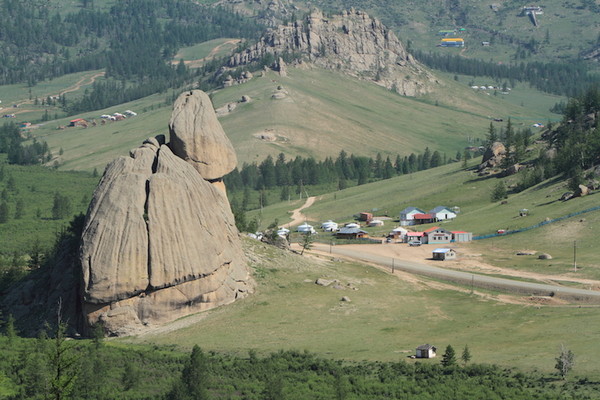
Khuvsgul lake--The Blue Pearl and Mother Sea:
Locally known as the Blue Pearl and Mother Sea, the Lake Khusgul is a worth seeing sight surrounded with lush greenery landscapes and Alpine-like mountains. Almost 100 rivers and streams culminate in these waters that were first formed almost 3 million years ago due to tectonic actions.
The Lake Khuvsgul is located approximately 800 kilometers far from the capital city Ulaanbaatar. It takes more than 10 hours to get there by car but you can visit a variety of interesting attractions on the way.
The Lake Khuvsgul is perfect in all seasons. Note that this stunning crystal clear lake has cold water even in summer.

Gobi desert--Land of Dinosaurs:
One of the most unusual desert landscapes in the world, the Gobi Desert has the spectacular singing dunes--Khongoryn Els. Gravel plains and rocky outcrops cover much of this area, which is the home of the last two-humped camels in the world and the Gobi bears estimated less than 50 in the world, the only bears you can find in the Mongolian desert. Visit the Eagle Valley, a protected site that narrows into a gorge. Bayanzag is another must-see place especially for those keen on history. It was an ancient sea floor and the site of several remarkable paleontological finds. The first ever full dinosaur skeleton was found in Khermen Tsav which is a canyon with an oasis.
Drive to the Gobi desert from the capital city Ulaanbaatar takes more or less 8 hours on paved roads. A domestic flight takes less than an hour but that is not frequent apart from the peak season. We recommend you to travel by car if you have time while visiting all the attractions mentioned above on the way.
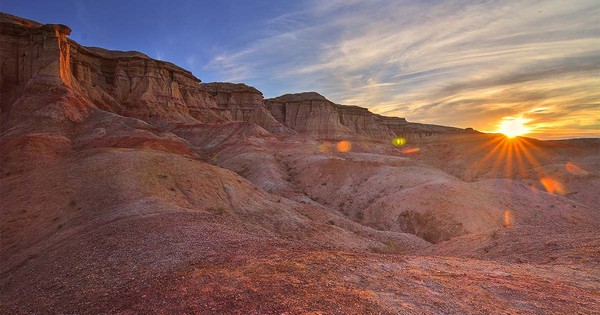
The best time to visit is late spring and autumn (May, September, and October). Summer might be fine but the average daily temperature is 34C sometimes it can go up to 40C.
Mongolia rich in natural and tourist resources:
Renowned around the world for its endless steppe, nomadic culture, and of course, Genghis Khan, Mongolia is a breathtakingly beautiful place to explore that will delight nature lovers and outdoor aficionados alike.
While it is precisely for its wild and rugged landscapes and endless nothingness that people visit Mongolia, the landlocked nation also has a number of gorgeous alpine lakes for you to enjoy, as well as towering mountains and the desolate Gobi Desert.
Hidden away among the vastness of the scenery are remote yurt camps for you to experience the time-honored traditions of Mongolian nomads and their famed generosity and hospitality. Plan your trip to this undiscovered Asian travel destination with our list of the best places to visit in Mongolia.
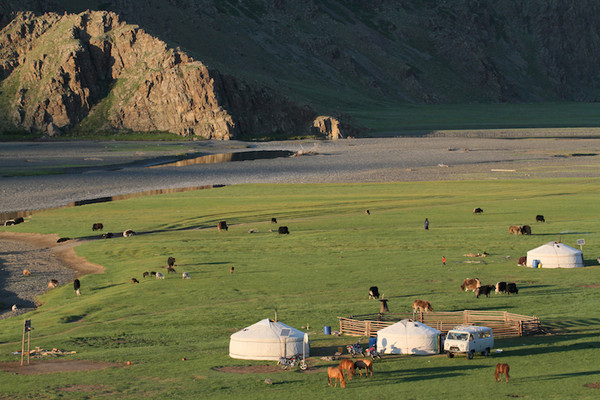
There are many more places for the tourists to visit in Mongolia and among them are:
Karakorum & Erdene Zuu Monastery:
Once the capital of the Mongol Empire, Karakorum is a fascinating place that is certainly worth a visit if you’re interested in learning more about the history and culture of the Mongols. Known to locals as Har Horin, the ancient city was visited by Marco Polo all the way back in the 13th century. Nowadays, however, the once-great city is but ruins, with endless sky and steppe in every direction.
Terkhiin Tsagaan Nuur:
Meaning ‘Great White Lake’ in English, Terkhiin Tsagaan Nuur is aptly named, as its reflective waters beautifully mirror the skies and clouds above. Stretching into the distance, the lake’s tranquil waters are surrounded by gently rolling hills, and the idyllic scenery is perfectly complemented by the white yurts and scatterings of horses that line its shores.
Due to its remote nature, Terkhiin Tsagaan Nuur is a very peaceful place to camp for a couple of nights. There are several great hikes you can do in the surrounding area, with Khorgo Volcano particularly worth a visit.

Orkhon Valley
Lying almost slap bang in the middle of Mongolia, it’s in the scenic Orkhon Valley where the sacred mountain-forest of Otuken was believed to be. Ruling over the place where the ancestor spirits resided granted the ruler the divine right to rule on Earth. This meant that its possession was considered to be absolutely crucial to each Turkic state that rose, ruled, and declined amongst the steppe.
Consequently, a wealth of interesting historic sights and cultural landmarks litter its mountainous terrain. The eighth-century Orkhon monuments and the Tuvkhun Hermitage are the most impressive of the lot, alongside the ruins of Karakorum and Erdene Zuu Monastery.
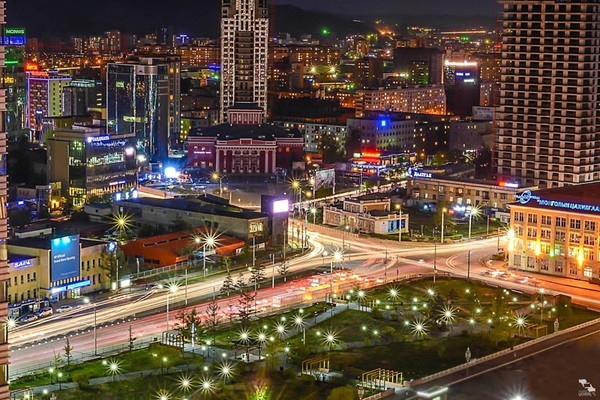
Genghis Khan Statue Complex:
Simply breathtaking, the gigantic statue of Genghis Khan atop his horse glimmers in the light as he imperiously looks out over all the steppe and mountains surrounding the complex. Towering to a height of 40 meters, the statue was built in 2008 to honor the 800th anniversary of the founding of the Mongol Empire. Its sheer size and scale are certainly fitting of the man who rose to rule such a huge swathe of territory and is a national hero in the country.
Ulaanbaatar:
Home to almost half of the country’s population, the sprawling city of Ulaanbaatar is Mongolia’s capital, as well as its cultural, administrative, and commercial heart. Located in the delightfully named Valley of the Golden Cradle, at the point where the Selbe and Tuul Rivers meet, the city is a strange yet intoxicating mix of urban and nomadic lifestyles.
While its downtown is a bit of an eyesore, with Soviet-era buildings lying alongside modern monstrosities, there are some enchanting old monasteries scattered about here and there: Choijin Lama and Gandantegchinlen are the best of the bunch and tucked away in the endless sprawl, you can still find a yurt or two.
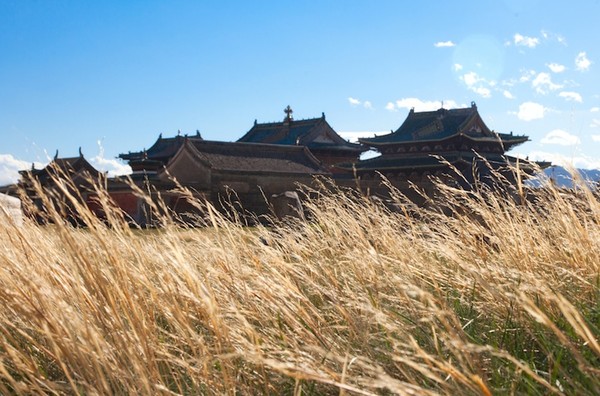
Altai Tavan Bogd National Park:
Covering a vast expanse of territory that includes everything from the Tavan Bogd massif to the glittering lakes of Dayan, Khoton, and Khurgan, Altai Tavan Bogd National Park will delight nature lovers and outdoor aficionados alike.
Located in the western corner of the country, the national park is home to some of the most spectacular scenery in Mongolia. The towering Tavan Bogd Mountains loom over the three large freshwater lakes that lie among them.
Due to its remote location, there is a very untouched and unspoiled feel about the place, with lots of wonderful fauna and flora to discover. You may be lucky enough to see ibex, brown bears, and grey wolves, with majestic golden eagles swooping overhead.

Khovsgol Lake:
One of the largest lakes in the whole of Mongolia, Khövsgöl is often nicknamed ‘the younger sister,’ due to its proximity to the famous Lake Baikal that lies around 200 kilometers to its northeast in Russia. Surrounded by a glorious national park of the same name that is home to lots of towering mountains and sweeping valleys, Khövsgöl Lake is set in a stunning location.
While its waters are relatively poor in terms of fish and marine life, Khövsgöl Lake remarkably contains almost 70 percent of the country’s freshwater and was formed over two million years ago.
Hustai National Park:
Lying just a short distance away from the capital of Ulaanbaatar, Hustai National Park is a fantastic place to head if you want to visit the renowned Mongolian steppe, while the beautiful Khentii Mountains add some variety to the scenery.
Traveling through the national park is an absolute delight as you pass small herds of wild horses making their way across the steppe with nothing else in sight other than faint mountains off in the distance.
The sheer expanse of nothingness is mind-boggling. While drinking in the magnificent scenery to your heart’s content is delightful, there’s always a slight feeling of relief when you finally come across a small cluster of yurts.
Gorkhi-Terelj National Park:
One of the most popular places to visit in Mongolia, Gorkhi-Terelj National Park’s alpine scenery is impressive. Its glorious mountain peaks are home to picturesque valleys, roaring rivers, and craggy rock formations, with charming yurt camps found here and there. As such, there are a plethora of great outdoor activities for you to try out, with hiking, rock climbing, and river rafting all being popular pastimes.
Horseback riding through the epic scenery is an unforgettable feeling and really is a must if you want to have the quintessential Mongolian experience. Although parts of the park can get busy due to its popularity and proximity to Ulaanbaatar, most of its dramatic landscapes remain pristine and untouched.

Relations between Korea and Mongolia:
Korea and Mongolia are historically, culturally, and geographically very close neighbors and can be said to be 'brother countries' who share the values of democracy and market economy.
Since the historic establishment of diplomatic relations in 1990, the two countries have strengthened cooperation in various fields such as government affairs, trade, energy, environment, and health and welfare, and other areas.
In particular, Mongolia is a very strategically important country in the New Northern Policy of the current Moon Jae-in government.
In 2020, Korea and Mongolia celebrated the 30th anniversary of their diplomatic relations.
Despite the crisis of the global spread of COVID-19 that began in early 2020, various events to commemorate the establishment of diplomatic ties were held in Korea and Mongolia.
It was an important opportunity to look back on the history of the development of bilateral relations over the past 30 years and to seek ways to further develop bilateral relations in the future.
An indicator that clearly shows the level of development of Korea-Mongolia relations is the active people-to-people exchanges between the two countries.

In particular, in 2019, more than 200,000 people-to-people exchanges between the two countries were recorded. The number of Korean visitors to Mongolia exceeded 100,000 and the number of foreigners entering Mongolia ranked third after China and Russia. In the same year, more than 110,000 Mongolians visited Korea.
In Mongolia, as of the end of 2019, about 4,200 students from 24 elementary, middle and high schools and 1,200 students from 16 universities were studying the Korean language. The degree of interest in Korea on the part of Mongolians is continuously rising sharply.
The Republic of Korea is Mongolia’s 6th Strategic Partner.
Mongolia’s strategic partnership with Korea once again shows its foreign policy strength.
According to an article by Bolor Lkhaajav on Sept. 13, 2021, the two countries held a high-level online summit. During the meeting between Mongolian President Khurelsukh Ukhnaa and his counterpart, President Moon Jae-in, South Korea became the sixth strategic partner of Mongolia.
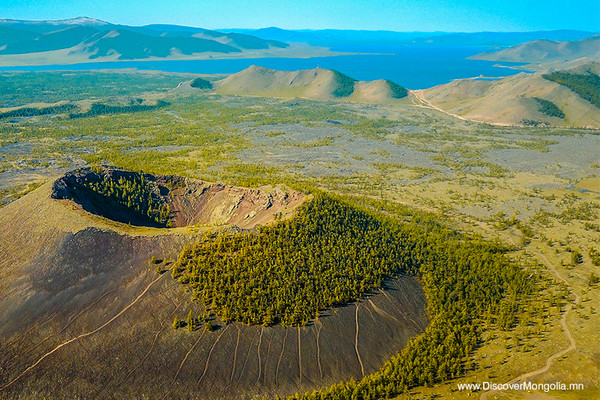
The two countries established diplomatic relations on March 26, 1990. In 1991, Mongolian President Ochirbat Punsalmaa’s state visit to the ROK made him the first head of state to visit Seoul after Mongolia’s democratization.
Over the past 30 years, as Mongolia’s third-neighbor foreign policy expanded, the bilateral relations blossomed rapidly under a multi-pillared approach. For decades, Mongolia was inspired by Korea’s development, industrialization, culture, and economic policies as one of the economics “tigers” of East Asia.
In early 1990s, the fast spread of Korean pop transformed the Mongolian youth. The K-pop bands such as H.O.T and S.E.S were hugely popular in Mongolia. Not only did young Mongolians listen to Korean music, but they also learned the Korean language, imitated Korean styles, and studied and worked abroad in South Korea--the impact was transformative.
Despite these social changes, Mongolia and Korea’s economic relations and trade remained slow but steady. Between 1994 and 2008, trade between the two countries grew from US$23.5 million to US$270 million. According to a report from the Korea Economic Institute of America (KEI), “Until 2015, Korea’s direct investment to Mongolia consisted of small businesses (55.5 percent), large companies (27.8 percent), and individual or private companies (16.7 percent) based on investment amounts.”
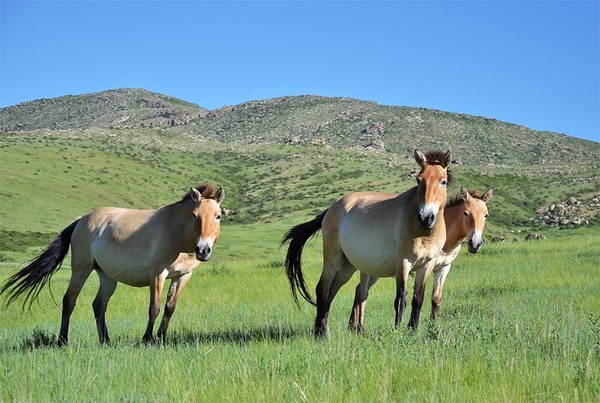
Since 2008, Korean investments in Mongolia have targeted the mineral industry, small manufacturing, construction, and agriculture. Korean agricultural and pharmaceutical companies have also invested in Mongolia’s natural medicinal industry in the last couple of years.
On the political level, Mongolia and Korea, as two of the largest democracies in East Asia, both play different but essential roles in solving complex tasks in the region. Given Korea’s geographical specificity, Seoul needs to make tough decisions concerning North Korea. Those in the West may not feel the immediacy of North Korea’s nuclear threat, but in East Asia, it is a ticking bomb.
North Korea’s repetitive provocations--such as its cruise missile tests over the weekend--not only threaten regional peace and security but also complicate political and economic solutions to overcome its protracted desolation.
While neighboring countries like China, Japan, and Korea, have sought deterrence in the past, Mongolia continued to push for peaceful dialogue, using its small-state mediation skills. Moreover, Mongolia’s non-nuclear weapons state status (NNWS) is a powerful boost to its credibility on the topic of denuclearization.
Since 2014, Mongolia has been hosting the Ulaanbaatar Dialogue on Northeast Asian Security to continue international debate and conversation on the security issues of the region. According to the Mongolian Ministry of Foreign Affairs, in 2017, the conference upgraded to Track 1.5 level, involving both government delegates and academia.
During the Mongolia-Korea high-level summit on September 10, Khurelsukh and Moon noted that over the past 30 years, Mongolia-Korea relations and cooperation have developed rapidly. Moon congratulated the President of Mongolia on his election victory and said he was pleased to be the first foreign president to hold a summit with Mongolia’s new head of state.

Moon also highlighted the importance of Mongolia in Korea’s New North Policy. During his speech, he pledged Korea’s cooperation in Mongolia’s long-term development plan, Vision 2050.
The decision to advance Mongolia-Korea relations to a strategic partnership level builds on the “Protocol on the Establishment of Diplomatic Relations” of 1990 and the joint statements signed between Mongolia and Korea during their 1991, 1999, 2006, and 2011 summits.
The consistent strengthening of the two countries and their people’s relations, under the principles of “complementary cooperation in the 21st century,” has been reflected in the changing status of the relationship: a “good neighborly and friendly cooperation partnership” in 2006, a “comprehensive partnership” in 2011, and now a strategic partnership.
Under the newly established Mongolia-Korea strategic partnership, the two countries have agreed to play an important role in strengthening regional and international peace and sustainable development under a multi-pillared foreign policy approach.
The Mongolia-Korea Strategic Partnership Joint Declaration reaffirms their commitment to strengthening political trust and expands cooperation between the two parliaments as well as stabilizing and enhancing dialogue mechanisms on security, defense, and foreign policy issues.
Moreover, Khurelsukh and Moon agreed to deepen mutually beneficial and complementary economic relations using the advantages and development potential of the two countries, such as South Korea’s advanced technology and Mongolia’s rich natural resources.
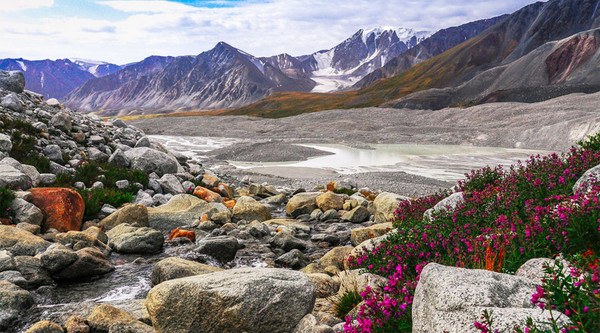
The Joint Declaration further stated that Korea would continue to seek various cooperation projects with Mongolia, supporting Mongolia’s post-epidemic economic recovery through official development assistance. Korea also seeks cooperation in Vision 2050-based projects and offered to assist in Mongolia’s policy implementation process. The Joint Declaration also touched on education, science and technology, environmental issues, public health, culture, and tourism.
Mongolia’s strategic partnership with Korea once again shows its foreign policy strength. In July 2021 alone, Mongolia held high-level talks with China, Japan, Korea, the United States.
Given the increasing significance of the Asia-Pacific region, Mongolia cannot afford to bandwagon with one regional player. In the past, Mongolia has established strategic partnerships with Russia, China, Japan, India, the United States, and now the Republic of Korea (South).
This newly established partnership presents new opportunities, a new level of dialogue, and increased collaboration between the two governments and the people of Mongolia and Korea. It is paramount for both governments to utilize and allocate resources correctly to produce a genuinely fruitful outcome.
